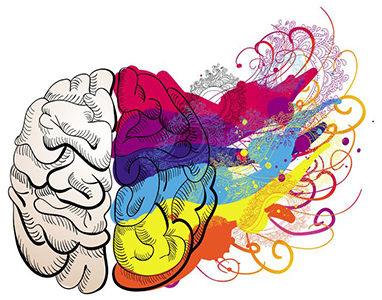 Because I am an executive coach with clients in a large metropolitan area, who also has coaching clients throughout the United States and abroad, I have the opportunity to meet and work with a variety of very creative people.
Because I am an executive coach with clients in a large metropolitan area, who also has coaching clients throughout the United States and abroad, I have the opportunity to meet and work with a variety of very creative people.
When I use the term “creative people,” I am not only referring to adults in the arts but also individuals in high tech, finance, education, not-for-profit, and many other sectors and professions.
While the plastic and dramatic arts might be the most visible, they surely don’t have an exclusive on the type of thoughts and actions that produce new ideas and contribute to the planet.
I have been giving serious thought to what traits and behaviors many of these creative people have in common. Since I work exclusively with people established in their careers, many of my clients hold high level executive, manager, or other senior level titles. What is most interesting is they often came to their work with very similar and specific attitudes and behaviors that have served them well, professionally and personally.
Here are a few things creative people share:
- They have a broad set of interests. The scientist goes to the opera; the hedge fund manager is an avid bird watcher, while the painter is an excellent Asian cook. They become engrossed, even expert, in these hobbies and use them as another way to apply their intelligence but also as a distraction from the day-to-day stresses of their day jobs.
- They read. Piggy backing on #1, creative people read voluminously in their field but are also well-informed about world events and their special interests. They are curious readers. They dedicate time to articles, books, blogs, and websites, and don’t see reading as exclusively recreation (though they are capable of reading a beach novel), a time-filler, or only work related.
- They know how to stir their creative juices. For many creative people, it involves some form of exercise, others music, but for a good percentage it is quiet time, thinking, dreaming, time to push aside the day-to-day and look forward and deeper, without the constraints of tasks or need to accomplish anything in the moment.
- They assume little and expect a lot. Those with high creativity feel comfortable starting with the unknown; therefore, are hesitant to make assumptions for fear of eliminating new or different ideas. They enjoy all sides of an argument and want to know the perspective of others; they can partner with adversaries. Once they have taken a direction, their quality demands are extremely high, unrelenting, and rigorous. In the workplace this aspect of their behavior can make them somewhat demanding and difficult to manage if they are paired with the wrong manager.
- They embrace mental illness or a disability. Anxiety makes them more cautious but driven, depression drives them deeper. Dyslexia or other learning disabilities forces them to compensate and approach a problem from a different angle or tackle the challenge in another way, often devising new techniques to help the general population. This is not to say they don’t seek professional help because more than any other group they respect the expertise of others and often have a team of leaders around them. They engage medical, legal, crafts, financial, and other pros early and often.
- They are resilient with a high tolerance for being different. Creative people endure naysayers and genuinely believe there is “no such thing as a bad review.” They can ignore criticism and see it as merely distracting. They embrace the fact they are not like everyone or anyone else. Praise and honor their uniqueness and you will get the most from them.
- They sacrifice for their work. They give more time, or make less money, maybe they are away from their families more than they would like. Sometimes they disappoint parents who had different aspirations for them. Their work can be isolating and lonely. At times very stressful. However, truly creative people understand and sign-up for the work, and appreciate the price of the prize.
- They are difficult to define, shirking labels and refusing to be pigeonholed. They see their role and mission as evolving and their intellectual hunger unlimited. They are who they are, not what others think. A workplace that can properly situate such employees often has a very loyal one.
Creative people bring many qualities to the workplace through their thoughts, actions, and mere presence. They are often misunderstood or “tolerated.”
If you are a truly creative person, I encourage you to nurture your gift. Create a workplace environment, so it encourages your performance and permits you to be you. Impossible? Not likely? This is where being bold comes into play.
Hi Jane, I love this! An excellent piece of work and as always very inspiring.
Thanks Alta. You surely walk the walk and talk the talk.
The traits I find true
Appreciate the feedback. Thanks!